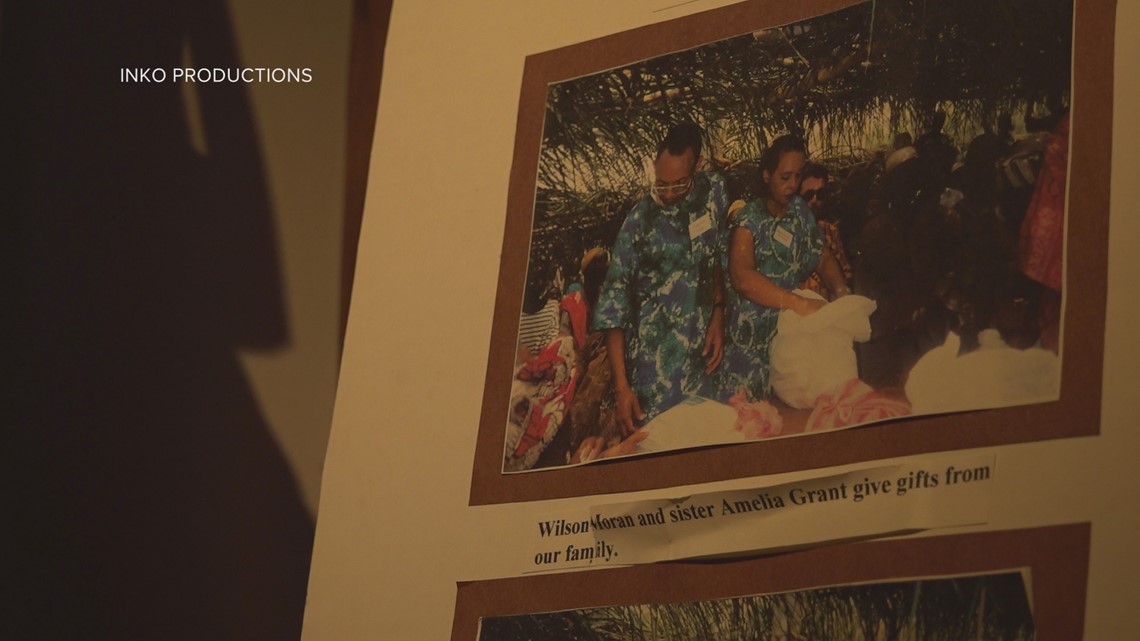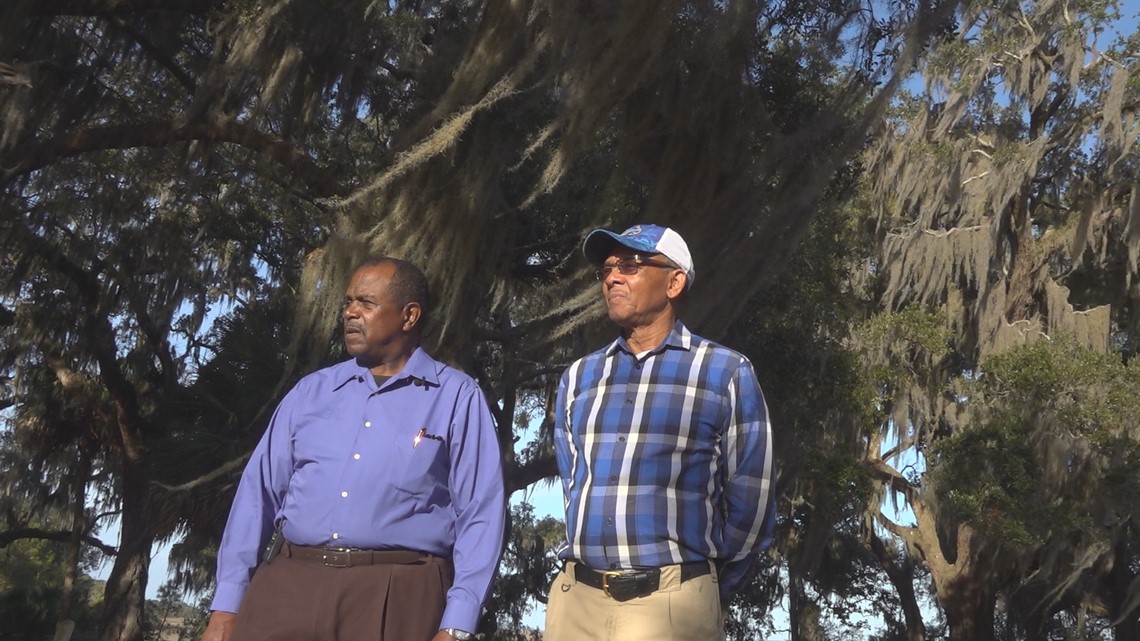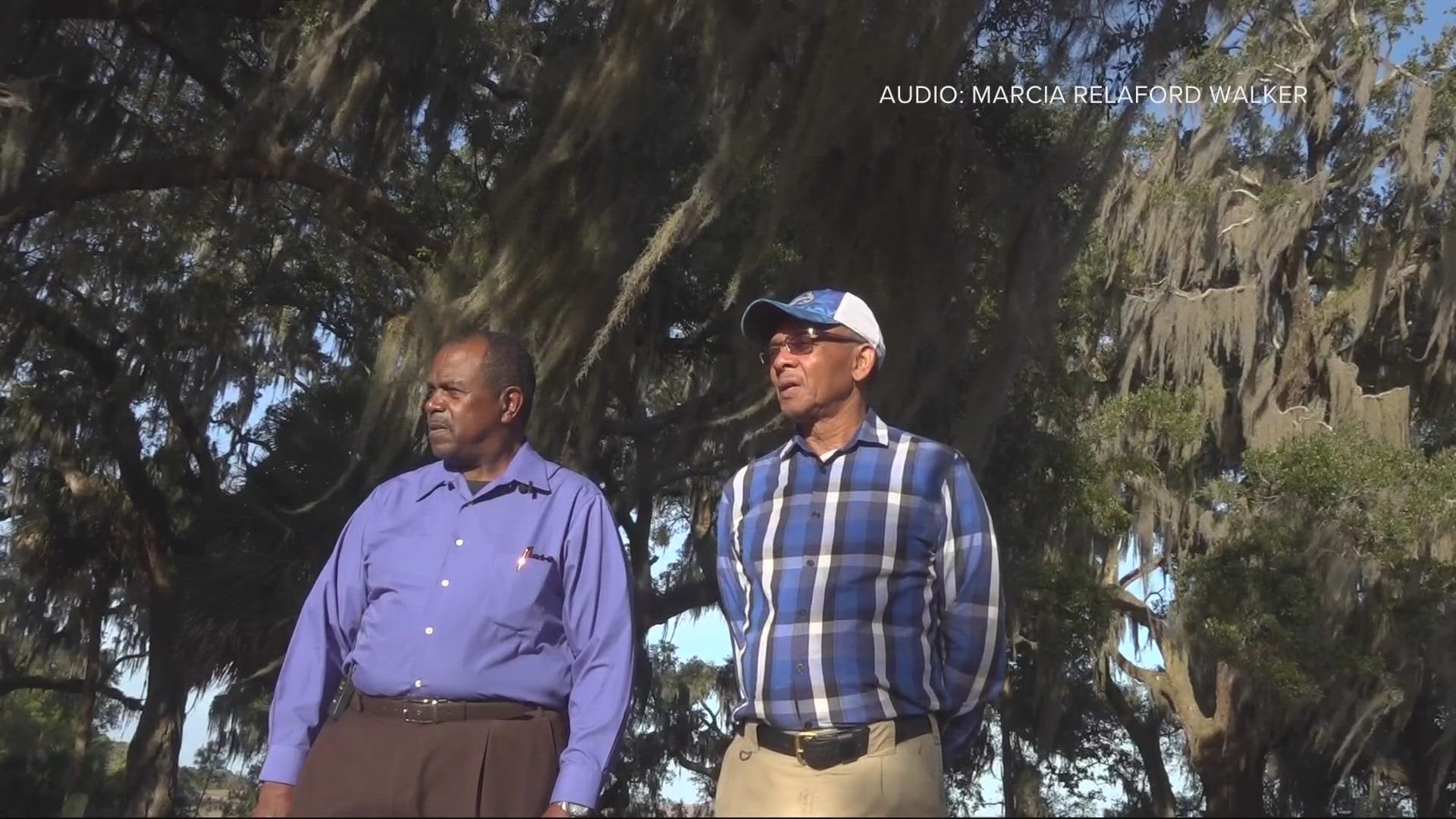TOWNSEND, Ga. — Family lineages were shattered during the Trans Atlantic Slave Trade.
Leaving unanswered questions for many African Americans to this day.
Winston Relaford, a long-time Jacksonville resident, grew up not knowing where his ancestors came from.
But thanks to what he called a "miraculous discovery," he's answered those questions and is making up for lost time.
It all started with a song.
"Nothing would have happened without her having the song," Relaford said.
The five-sentence song, traditionally sung by women, has had many keepers over the years.
One of them, a little girl from a village on west coast of Africa during the 18th century.
Her name is lost to history, but she is Relaford's great-great-great-great- grandmother.
"I can imagine that slave girl, many nights on the ship in the yard at Bunce Island and on the plantation here. She cried out, and when you cry out, you cry in the language of your birth," Relaford said.
The story of the song is chronicled in the 1998 documentary film, The Language You Cry In.
African American linguist, Lorenzo Dow Turner, first recorded the song in the 1930s in the coastal town of Harris Neck, Georgia.
The singer was a woman named Amelia Dawley.


The recording sat idle for 50 years until anthropologist Joe Opala used linguistic clues to connect the song to the country of Sierra Leone.
Opala, ethnomusicologist Cynthia Schmidt, and Sierra Leonean linguist, Tazieff Koroma traveled village to village playing the recording.
Until finally, exhausted, they reached the remote village of Senehun Ngola, initially outside their radius of potential matches.
When Schmidt played the recording, the women in the village sang along.
"When you saw The Language You Cry In you felt well, I belong somewhere else, and it was a reckoning, if you will, that my god, there is a beginning. There is something where my family came from," Relaford said.
That lineage was connected for the first time when the team returned to Harris Neck. They shared their discovery with Amelia Dawley's daughter, Mary Moran, who remembered her mom singing the song.
The song of the nameless little girl who was kidnapped, shackled in the bottom of a boat and sold to a plantation in the 1700s.
Her survival, her song, helped link the past, present, and future.
"It's our job to carry it forth and we are just a part of the history so that the significance of that song will never be lost again." Amelia Dawley's grandson, Wilson Moran, said.
Moran still lives in Georgia but is close cousins with Relaford.
"We have become brothers. That is about the only way I can explain it now we don't always agree he's got a mind of his own," Moran said with a smile.
The film documents Wilson and his mother [Mary Moran] visiting Sierra Leone for the first time in the late 90s to a massive welcome from the village.


"I cannot put in words how I felt, and how I still feel, and that's the reason I go back continuously," Moran said.
Wilson has been to the village several times. Winston recently went to Sierra Leone for the first time.
"To see the courtyards that they [slaves] were housed in, they had a big courtyard that was directly under the overseers' quarters on the second story and in that courtyard, there was troughs, and they had the men were housed there and they were all shackled from their ankles, and they were given rice to eat. They poured it in a trough like hogs. It's the inhumanity in all of that, even after all those years, it still had a bit of pain in it when you consider what our forefathers went through," Relaford said.
On their last trip the cousins built a home for Bendu Jabati, the woman who first recognized the recording of the song.
They also bought property, started a goat farm, and plan to keep building on their next trip in early March.


"When I was there before, I was in the village for one day. This time I'll be there for 16-17 days and so I'm going to immerse myself in the culture. I'm going to learn the people I want to learn their ways. I want to see who they are." Relaford said.
The song is about burying the loved ones, but it has survived.
"As far as I know we're the only family that's been able to go back to the very village that they came from through a song." Relaford said.
Echoing off headstones in Harris Neck and new beginnings in Senehun Ngola.
A song uniting a family, past and present.

